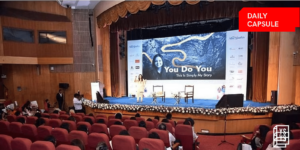The market for consumer medical wearables is one of the fastest growing sectors in the technology industry. Recent data showed that the global wearable healthcare market is projected to reach USD 30.1 billion by 2026 from USD 16.2 billion in 2021. According to Deloitte, 320 million consumer medical wearables will ship globally in 2022.
As more Indians look to closely monitor their health and turn to wearable technologies, the pace of innovation opens new possibilities to address some of the biggest health and wellbeing challenges we face in our societies. From a vendor perspective, the opportunities to capture a share of this enormous market are immense, for both established players and the myriad of new startups that are emerging in different areas of digital health.
To understand Indian consumers’ attitudes and behaviours towards wearable technologies, Cisco AppDynamics recently conducted research on the matter. Interestingly, 90 percent of respondents in India said they were excited about the benefits that wearable technologies bring to understanding their health. And 93 percent believe that wearable technologies now have the potential to positively transform both their own personal health and public health services as a whole.
The research revealed that people are prioritising wearable technology devices and digital health applications across a whole host of areas relating to their health and wellbeing, beyond simply tracking and managing their general physical fitness, from managing sexual health and fertility through to identifying and reducing the spread of infectious diseases. And 86 percent of consumers want to be able to identify the early warning signs of life-threatening illness or diseases (such as cancer) through wearable medical technology.
But while it might seem that nothing can interrupt the rise of wearable technology, it’s important for brands not to take the growing demand for new devices and applications for granted.
Applications are driving consumer uptake of wearable technology
When you think of wearable technology, you probably think of a watch or a bracelet. Or you might consider an ECG monitor or even a piece of connected clothing. While it is understandable in an industry like this, where truly innovative (and potentially life-changing) devices are being introduced on a regular basis, the reality is that a vast majority of these devices primarily serve as data collection devices. They collect health and wellbeing data from individuals and feed that back to digital health applications, which consumers now use to monitor and manage a growing number of different aspects of their health, fitness, and wellbeing.
They already have access to over 350,000 digital health applications, and this number is expected to grow over the next year. With so much buzz surrounding the potential impact of wearable medical technology on public health, it’s critical that brands don’t overlook the role of health applications if these future benefits are to be fully realised.
Performance of supporting applications is key
Over the past few years, consumer expectations around digital experience have skyrocketed. Their use has drastically changed during the pandemic, as they had to rely almost exclusively on digital services and applications across many areas of their lives. From the smallest of needs like grocery and entertainment, to virtual doctor’s appointments and financial services, everything has gone digital nowadays. This shift has also made consumers far more demanding and less tolerant when applications don’t perform as they should. A Cisco AppDynamics report last year found that 69 percent of Indian consumers feel that brands have ‘one shot to impress’, and if they fail to offer a good digital experience they will move to a competitor, possibly forever. That’s the reality which all digital brands have to face.
While this is the case for daily applications, digital health goes up a notch because it is extremely personalised and trust is of paramount importance. When wearing a device such as a smartwatch or bracelet for tracking health data, consumers need to ensure that it is being looked after properly by technology providers. 85 percent Indian consumers agree that trust is a critical factor when choosing a wearable medical device or application.
The consumer healthcare market is filled with options. And it’s not only in relation to data privacy and security where people have zero tolerance for poor experiences. From slow or unresponsive applications to difficulties in downloading and installing applications, consumers are unforgiving when they have a poor experience from wearable medical technology providers. Therefore, it’s essential for the brands to offer a seamless digital experience interface, because just a single glitch can make consumers switch to another brand. 74 percent of Indians claim that they would stop using a specific wearable device or application if they had a bad digital experience.
It is essential for the brands behind wearable devices and health applications, and for the industry as a whole to constantly improve and innovate to stay on top of their game. So technologists have to ensure they have the right tools for monitoring and managing IT performance for applications to work round the clock. It is essential they have real-time visibility into performance across their entire IT estate to identify problems and resolve issues before they impact the end user experience.
Digital health application providers can meet new levels of consumer expectations and fully deliver on the promise of wearable technology by ensuring their technologists are equipped to deliver seamless digital experiences. By doing so, they can be well positioned to capitalize on the excitement and momentum that is building in this space.










